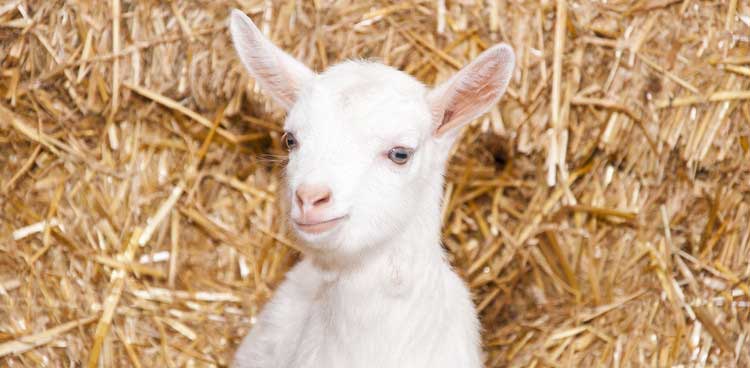
Originating in and named after the Saanen Valley, south of Canton Berne, Switzerland, Saanen (pronounced sah-nin) goats spread across Europe in the 19th century. The animals were first brought to the United States in 1904 and have become one of the country’s most prized breeds. The North American Pack Goat Association, an industry group with 70 members, reports that of the 400 goats owned by its constituents, the majority are Saanen, Alpine, or their respective crossbreeds. Saanens can also be found in parts of Australia and Canada. Their popularity is most likely due to their easygoing demeanor; the ruminants are often referred to as “living marshmallows.” And while the goats’ good looks often land them in show rings, their high milk-producing capabilities also make them a top choice for many dairy farmers.
Appearance and Temperament
“My Saanens are sweet-natured and have easygoing personalities,” says Judy Schad, cheesemaker and co-owner of Capriole Goat Cheese in Greenville, Ind. “They are very calm—from personality to production, [Saanens] are easy to work with.” Adds Jennifer Lynn Bice, CEO and president of Redwood Hill Farm and Green Valley Organics in Sebastopol, Calif.: “They’re gentle giants.”
Gentle giants indeed—Saanens are the largest dairy goat breed in the world, averaging 32 inches in height and 150 pounds in weight (typically 145 pounds for does and 160 pounds for bucks). Their blazing white coats feature short, fine hair, making them more susceptible to sunburn than other breeds. Consequently, Saanens thrive in cooler regions. The goats also have high, pointed ears and wedge-shaped bodies; their shoulders are narrower than their hips.
Milk and Cheese
When it comes to mealtime, this breed can be picky. “Saanens are the most particular eaters of all our breeds,” says Schad. “Like most goats, they are browsers, not grazers, and don’t want to eat off the ground unless they have to.” Because of this, many Saanen dairy farms utilize green chop feeding, a process in which pastures are machine-harvested, then fed to livestock.
Yet this extra care in feeding comes with rewards. Often referred to as “the Holsteins of dairy goats,” Schad says, Saanens have a high milk yield—one of the highest, in fact, with some does producing up to 5,000 pounds each year (the annual breed average is about 2,000 pounds). With a butterfat content that hovers between three and four percent, the milk isn’t overly rich, and its small fat molecules make it easy to digest.
Saanen milk can be used to craft any number of cheeses, including the tangy cheddar and creamy yogurt at Redwood Hill Farm, as well as the buttery tommes and ash-dusted rounds at Capriole Goat Cheese. For Bice and Schad, it was the breed’s sweet disposition that won them over—and a generous milk output doesn’t hurt, either.
Feature Photo Credit: Baronb | Shutterstock



